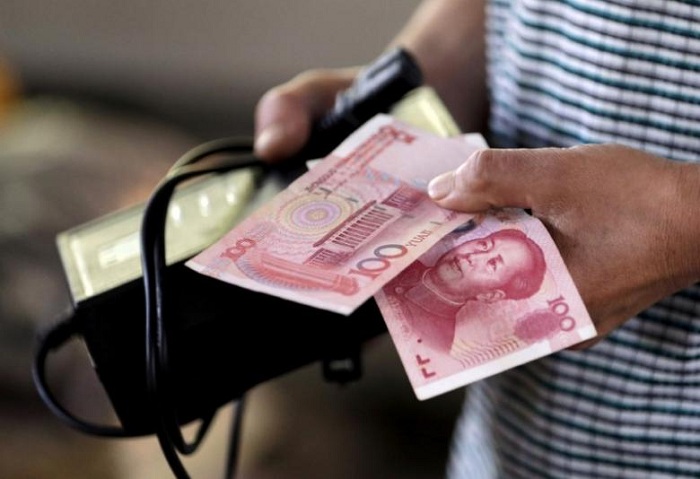And this may be why: a total of 459.5 billion yuan ($67.6 billion) of funds issued via reverse-repurchase agreements and the PBOC’s medium-term lending facility comes due this week, the most since the week ending June 5. Further pressuring liquidity, government issuers and policy banks will sell at least 483 billion yuan of bonds by Friday. And then there’s tax payments, which may see companies hoard cash into the end of July.
The looming maturity wall has also coincided with a shift in the PBOC’s rhetoric.
The bank comments whenever it refrains from conducting open-market operations, or OMOs, and Monday’s statement referred to a “moderate” level of liquidity in the banking system, a change from the previous 11 trading days when it was described as “relatively high.” Policy makers inject funds to maintain stability in the financial system and to relieve pressure on economic growth as they push on with a much-publicized deleveraging campaign.
Not Stingy
China Merchants Securities Co. goes a step further, with analysts led by Chief Bond Analyst Xu Hanfei predicting a resumption of OMOs as well. The authorities “won’t be stingy” when it comes to injecting funds should China’s economy start to slow in the third quarter, said Pan Jie, chief fixed-income analyst at Orient Securities Co.
Right now, money-market rates reflect a system still pretty flush with liquidity.
While China’s benchmark seven-day repurchase rate edged up seven basis points as of 1:41 p.m. in Shanghai on Tuesday, it fell the most last week since May to a 12-week low. Still, yields are also creeping higher, with rates on 10-year government bonds nearing their highest level in three weeks.
The central bank doesn’t want liquidity to be too tight because it could hit economic growth and financial stability, says Yulia Wan, a banking analyst at Moody’s Investors Service in Shanghai.
“Policy makers will use a combination of tools to maintain neutral and slightly tight liquidity conditions for the rest of this year,” she said.
More about: #yuan

































-1741945056.jpg&h=120&w=187&zc=1&q=70')












